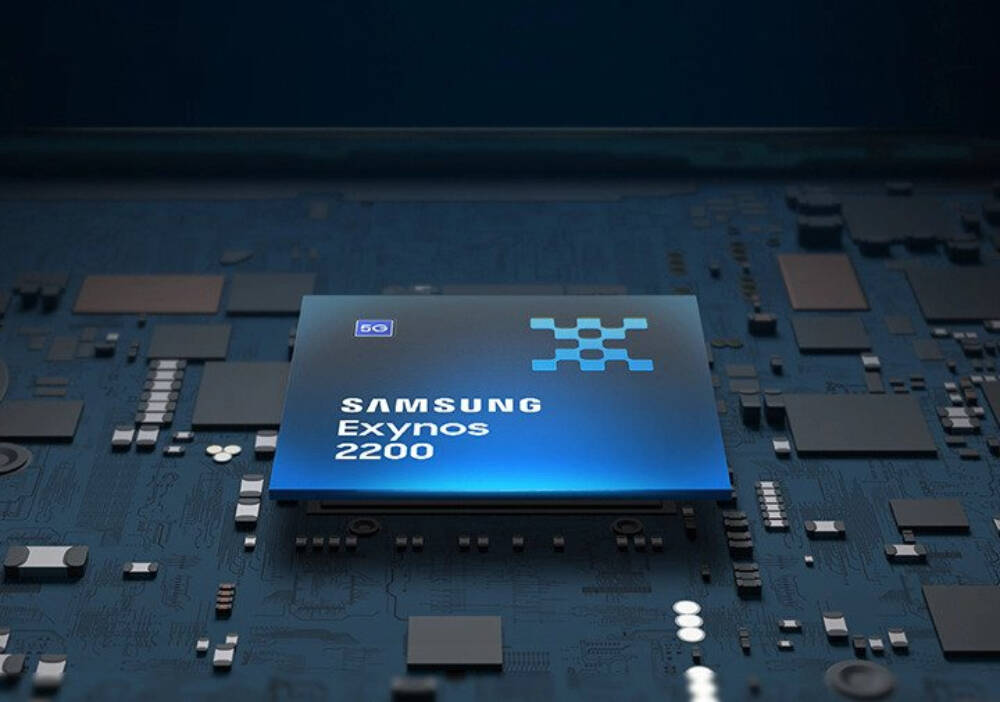Samsung Scores Fresh Radeon Deal With AMD For Exynos Chip Line Ahead Of Profit Crunch

Samsung has inked a multi-year agreement with AMD for more Radeon graphics in its Exynos mobile processors, just ahead of reporting quarterly financials that analysts expect will show a steep fall in profit on the back of weakened demand for semiconductors.
The chip deal will give Sammy access to multiple future generations of AMD's low-power Radeon graphics to expand the range of Exynos system-on-chip (SoC) silicon used in many of its Galaxy smartphones.
This an extension of an existing arrangement between the two chip companies, with Samsung saying it will allow for console-level graphics quality but with optimized power consumption on more of its mobile devices.
Samsung and AMD first cosied up in 2019, leading to the co-development of Samsung Xclipse, a mobile GPU based on AMD's RDNA 2 architecture last year. Samsung said Xclipse is a mobile GPU with hardware-accelerated ray tracing and variable rate shading features for games on mobile devices.
"Drawing on our technological know-how in designing ultra-low-power solutions, we will continue to drive ongoing innovation in the mobile graphics space," Samsung EVP of Application Processor (AP) Development Seogjun Lee said in a statement.
However, the Korean giant is going through a rough patch along with most other semiconductor companies, and some industry analysts are expecting the company to report its lowest profit for 14 years in its preliminary Q1 2023 results due on Friday.
The predictions are for Samsung to say that its profits are down by about 90 percent to the region of ₩1.45 trillion ($1.1 billion), according to Bloomberg. This would compare with an operating profit of ₩14.12 trillion ($11.1 billion) for the same period last year, based on ₩77.78 trillion ($61.2 billion) in revenue, and would represent the lowest profit for the company since 2009.
Samsung is likely to blame the global economic situation for its trading output, with rampant inflation causing consumers to rein in spending on devices, and many device makers still working through stockpiles of components they accumulated in response to the earlier chip shortages.
- Samsung takes $3.1B gamble on OLED displays for tablets and notebooks
- As chip sales slump, inflation makes the price of Samsung's Texas fab blow out
- Samsung to splurge $230B on five new chip plants for South Korea
- White House ban on US chip cash going into China ruffles South Koreans
The South Korean megacorp did not curb its expenditure in the same way that other chipmakers did when it became clear the industry was entering an industry downcycle. As The Register reported last year, Samsung said it expected the fall off in demand to rebound this year, especially in the datacenter segement, and it planned for higher bit growth than the rest of the market for both DRAM and NAND, with a focus on high-density and high-performance chips.
Samsung also said it plans to invest $230 billion over the next 20 years in building five new semiconductor plants in South Korea as part of a blueprint from the country's government to boost its domestic semiconductor supply.
US memory maker Micron made similar predictions regarding a recovery about the same time, but it cut back on capital investment in production by more than 30 percent. Micron itself reported a 53 percent drop in revenue last week for the quarter to March against the same period a year ago, and recorded a net loss of $2.31 billion.
Bloomberg reports that at least one investment fund, Allianz Global, is also placing its bets on a bounce back in demand in the semiconductor market in the second half of 2023. One of the company's top investors said he was putting funds into Taiwanese chip companies such as TSMC, the world's largest semiconductor contract manufacturer.
However, Gartner's vice president for semiconductors and electronics, Richard Gordon, told us last year that he expected total semiconductor growth to be negative for 2023, with a recovery in the market beginning in 2024 and accelerating in 2025. He has since reiterated that forecast. ®
From Chip War To Cloud War: The Next Frontier In Global Tech Competition
The global chip war, characterized by intense competition among nations and corporations for supremacy in semiconductor ... Read more
The High Stakes Of Tech Regulation: Security Risks And Market Dynamics
The influence of tech giants in the global economy continues to grow, raising crucial questions about how to balance sec... Read more
The Tyranny Of Instagram Interiors: Why It's Time To Break Free From Algorithm-Driven Aesthetics
Instagram has become a dominant force in shaping interior design trends, offering a seemingly endless stream of inspirat... Read more
The Data Crunch In AI: Strategies For Sustainability
Exploring solutions to the imminent exhaustion of internet data for AI training.As the artificial intelligence (AI) indu... Read more
Google Abandons Four-Year Effort To Remove Cookies From Chrome Browser
After four years of dedicated effort, Google has decided to abandon its plan to remove third-party cookies from its Chro... Read more
LinkedIn Embraces AI And Gamification To Drive User Engagement And Revenue
In an effort to tackle slowing revenue growth and enhance user engagement, LinkedIn is turning to artificial intelligenc... Read more

